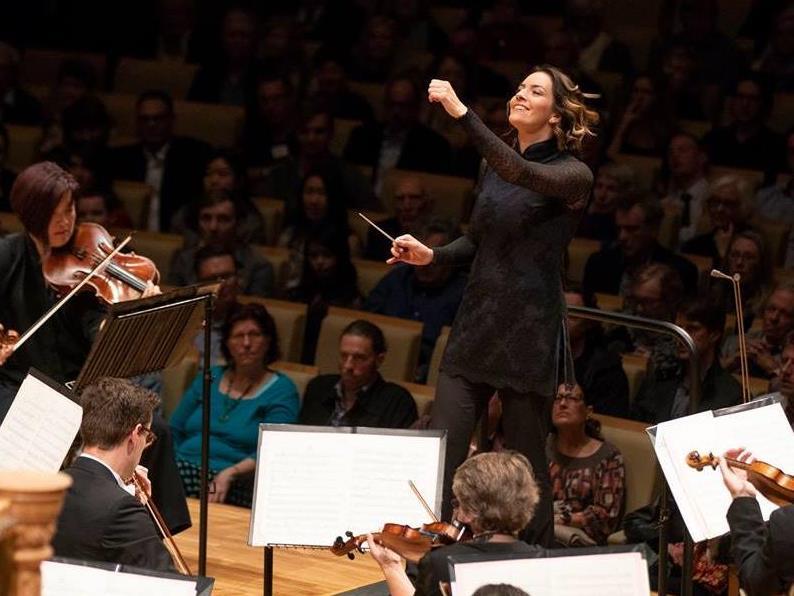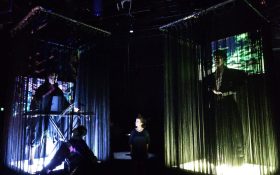Queensland Symphony Orchestra.
The latest concert in Queensland Symphony Orchestra’s Maestro series is a diverse trio of orchestral works headlined by Beethoven’s Symphony No. 7, with Prokofiev’s Symphony No. 1 and the premiere of a new piano concerto from prolific Australian composer Elena Kats-Chernin making up the program.
Opening the concert is Prokofiev’s Symphony No. 1, simply titled Classical Symphony. Eschewing the trend at the time it was composed and premiered for symphonies to be serious, densely themed works, it’s a shorter symphony that borrows the template from the lighter symphonies of the Classical period with Prokofiev’s romanticism layered on top. With Alondra de La Parra at the helm what might have been an unremarkable piece becomes an energetic opening to the concert.
The mood shifts to serious and weighty on multiple levels for the world premiere of Elena Kats-Chernin’s Piano Concerto No. 3, Lebewohl. Inspired by Johann Sebastian Bach and speculations about his first wife who died prematurely at the age of 36, it explores in five movements the stages of bereavement following her departure. Although inspired by and borrowing ideas from Bach, it’s very much composed in the sweeping neoromantic style Kats-Chernin’s previous large-scale works are known for, with lush orchestration evocative of nature and history. Pianist, award-winning recording artist and frequent collaborator of the composer Tamara Anna-Cislowska gave a performance that left little doubt that there exists nobody better to premiere this work. Anna-Cislowska owned and embodied Lebewohl, from the moody turbulence in the first movement to the contemplative, minimalist 4th movement. Following Lebewohl’s rapturous reception, the composer was goaded into an impromptu encore performance – a version of Kats-Chernin’s Russian Rag for four hands played by Tamara Anna-Cislowska and the composer herself. The composer taking seat at the piano brought into relief the improbable coincidence of there being three women at the helm in the stations of composer, conductor, and soloist; spots more commonly filled by men. On many levels it felt like a singular and momentous occasion.
Written for a charity concert to raise money for wounded Austrian soldiers, Beethoven’s 7th Symphony is an energetic, uplifting work with militaristic and political undertones that could be imparted by the listener – although no explicit meanings or themes have been set by Beethoven himself. The vibrant first movement and frenetic last movement contrasts with a sedate and stately second movement; a movement so popular that it’s often performed by itself. Conductor Alondra de la Parra consummately teases out the various moods, phrases, and themes in the work to its full expression. With cohesive and pitch-perfect playing from the QSO who band together like a tight-knit unit, the conclusion of Beethoven’s 7th left the audience uplifted and restored.
4 ½ stars ★★★★☆
Queensland Symphony Orchestra and Tamara Anna-Cislowska
QPAC Concert Hall
6 September





